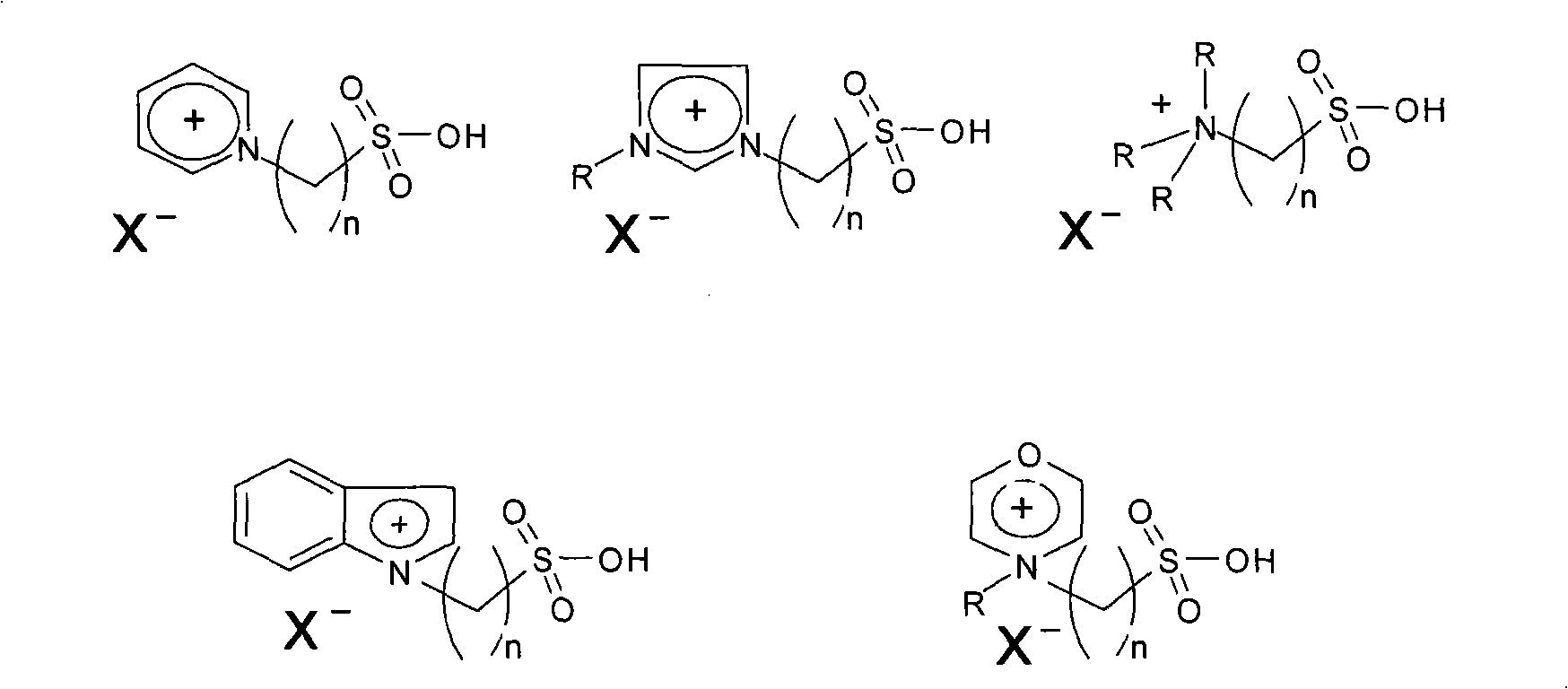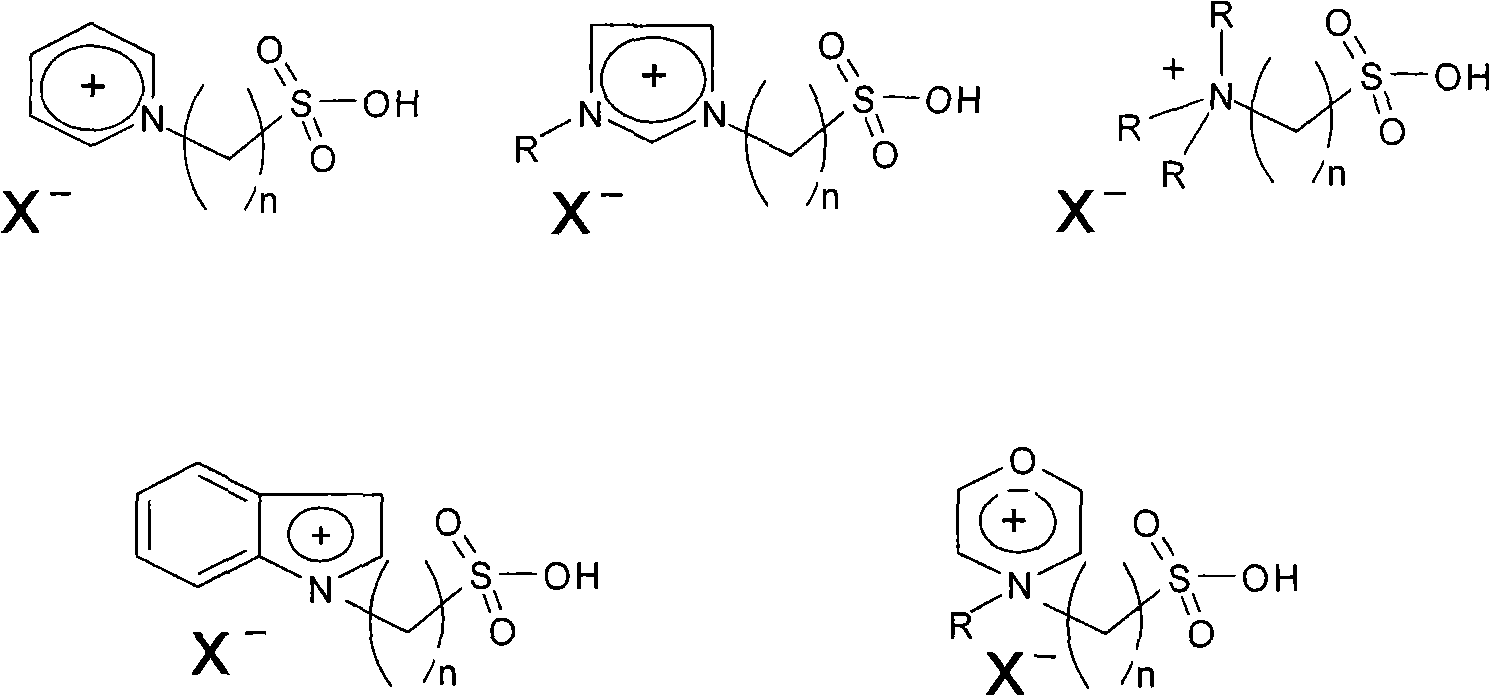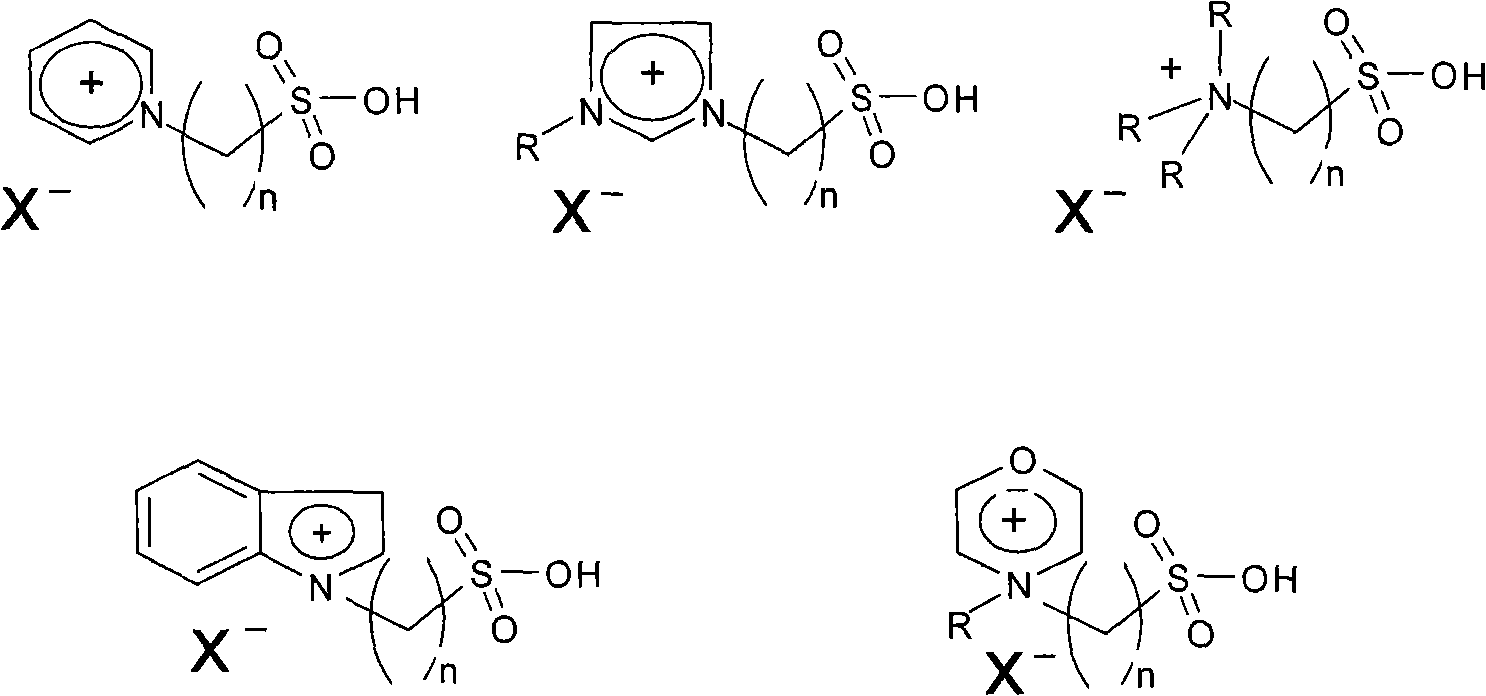Method for preparing reducing sugar by catalyzing hydrocellulose
A technology for catalytic hydrolysis and cellulose, applied in sugar production, monosaccharide, chemical recovery, etc., can solve the problems of non-green, high equipment requirements, etc., and achieve the effect of stable performance and simple synthesis method
- Summary
- Abstract
- Description
- Claims
- Application Information
AI Technical Summary
Problems solved by technology
Method used
Image
Examples
Embodiment 1
[0033] In a three-neck flask equipped with a thermometer and a magnetic stirrer, add 4 g of ionic liquid [C 4 mim] C1, heated to 100°C in an oil bath to dissolve. Then add 0.32 g of cellulose to make a uniform and transparent cellulose solution. 0.06 g of water and 0.32 g of acid-functionalized ionic liquid 1-methyl-3-(3-sulfopropyl)imidazolium bisulfate were added to the cellulose solution. React at 100°C for 2-4 hours. After the reaction is completed, water is added and filtered, and the filtrate is passed through an ion exchange resin column to separate the reducing sugar and the ionic liquid. The cellulose conversion rate was 81.3%. The yield of reducing sugar was 79.6%.
Embodiment 2
[0035] In a three-neck flask equipped with a thermometer and a magnetic stirrer, add 4 g of ionic liquid [C 4 mim]C1, microwave heating to 100 ℃ to dissolve. Then add 0.80 g of cellulose to make a uniform and transparent cellulose solution. 0.20 g of water and 0.80 g of acid-functionalized ionic liquid 1-methyl-3-(3-sulfopropyl)imidazolium bisulfate were added to the cellulose solution. React under microwave heating conditions for 10-15 minutes. After the reaction is completed, water is added and filtered, and the filtrate is passed through an ion exchange resin column to separate the reducing sugar and the ionic liquid. The cellulose conversion rate was 89.2%. The yield of reducing sugar was 85.6%.
Embodiment 3
[0037] In a three-neck flask equipped with a thermometer and a magnetic stirrer, add 8 grams of ionic liquid [C 4 mim] C1, heated to 100°C in an oil bath to dissolve. Then add 0.60 g of cellulose to make a uniform and transparent cellulose solution. 0.12 g of water and 0.60 g of acid-functionalized ionic liquid 1-methyl-1-(3-sulfopropyl)morpholine hydrogensulfate were added to the cellulose solution. React at 100°C for 6-8 hours. After the reaction is completed, water is added and filtered, and the filtrate is passed through an ion exchange resin column to separate the reducing sugar and the ionic liquid. The cellulose conversion rate was 79.4%. The yield of reducing sugar was 74.2%.
PUM
 Login to View More
Login to View More Abstract
Description
Claims
Application Information
 Login to View More
Login to View More - R&D
- Intellectual Property
- Life Sciences
- Materials
- Tech Scout
- Unparalleled Data Quality
- Higher Quality Content
- 60% Fewer Hallucinations
Browse by: Latest US Patents, China's latest patents, Technical Efficacy Thesaurus, Application Domain, Technology Topic, Popular Technical Reports.
© 2025 PatSnap. All rights reserved.Legal|Privacy policy|Modern Slavery Act Transparency Statement|Sitemap|About US| Contact US: help@patsnap.com



